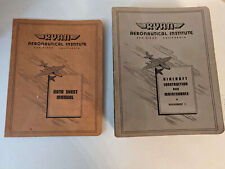|

On eBay Now...
VERY RARE WWI September 1916 German Zeppelin L33 Autumn Offensive \"LONDON RAID\" For Sale

When you click on links to various merchants on this site and make a purchase, this can result in this site earning a commission. Affiliate programs and affiliations include, but are not limited to, the eBay Partner Network.

VERY RARE WWI September 1916 German Zeppelin L33 Autumn Offensive \"LONDON RAID\":
$1253.75
VERY RARE! WWI September 1916 German Zeppelin L33 Autumn Offensive \"LONDON RAID\" Shot Down Wreckage RelicComes with hand-signed C.O.A. LARGE PIECE OF Zeppelin L33! “The third raiding period began when 12 navy airships headed for Britain late in the afternoon of September 23. The navy crews had been dismayed by the destruction of SL-11 three weeks previously, but that had been a wooden army ship. Certainly such a thing could not happen to the veteran navy captains in their true Zeppelin airships. The new L-30 class ships, led by Heinrich Mathy in the L-31, worked their way southward and crossed the southern English coast. This route assured a strong tail-wind and speedy flight past the most dangerous anti-aircraft areas over London. The other smaller Navy ships; L-13, L-14, L-16, L-17, L-21, L-22 and L-23 took the direct route into the Midlands, with only the L-17 causing any casualties at Nottingham. Captain Alois Böcker in the L-33 was the first to arrive over the capital. He dropped most of his bomb-load on the East End around Bow and Stratford, with the airship crew reporting visible fires and explosions with each bomb burst . However a shell from the defenses over Bromley exploded inside the ship, causing tremendous physical damage but no fires. She dropped much of her water ballast which was reported by British ground spotters as a smoke screen, and made her way eastward losing 800 feet of altitude each minute. After a dangerous encounter with a British airplane which pumped several drums of Brock-Pomeroy ammunition into L-33 to no effect, the airship came to earth at Essex where Böcker and his men jumped to the ground and fired several flares into her. They were promptly captured as L-33 burned to the ground having landed mostly intact.” This incredibly rare and museum-grade WWI artifact is an original wreckage fragment of the infamous German Zeppelin L33 that was shot down on the night of 24 September 1916, following an aerial raid attack on London. German Zepplin L33 was apart of the German Autumn Offensive in 1916. The Autumn Offensive was poised to create havoc and devastation across England and London. Crashing near the small village of Little Wigborough the airship had been on a bombing raid over London and was returning to Germany. She was, however, hit by gunfire over the East End and she then struggled to stay aloft. Losing height over Mersea Island, L33 came to earth straddling the lane to Little Wigborough Church and only a few yards from New Hall Cottages. The German Zepplin L33 crew all escaped from the airship and the German Captain, Aloys Bocker, went to the cottages to warn them that he was about to set the airship on fire. They were somewhat terrified and did not answer the door - but occupants and cottages all survived the resulting inferno. Captain Bocker then marched his crew along the lane - until they were met by Special Constable Edgar Nicholas. The German crew surrendered. Edgar Nichols was soon joined by Special Constable Elijah Trailer and then by Police Sergeant Ernest Edwards who was on leave, staying in the lane. The crew were marched to Peldon Post Office and then on to Mersea Island. The Military met them at the Strood and took over. The loss of both L-32 and L-33 had a serious negative effect on morale. The crash of an army airship was one thing, but the loss of two veteran navy captains, their crews and their new ships was altogether different. The next raid, just two nights later was far more cautious. Captain Ganzel of the L-23 was dismissed after the raid due to his erratic behavior. His nerves were wrecked and he was transferred to surface fleet duty. Horst von Buttlar in the L-30 made a cautious approach near the English coast at Cromer, dropped his bombs in the sea and turned back. Mathy in L-31 made an audacious attack on Portsmouth, a previously untouched target. Unfortunately for him, the searchlight defenses were very strong and he mistakenly dropped his bombs into the harbor instead of on the Navy yard. The British, who knew from intercepts that it was Mathy were so astonished at not being accurately bombed that they thought it must have been a reconnaissance flight; a tribute to their personal opinion of Mathy. The End of Zeppelin L33: THE END OF ZEPPELIN L33 (The Authentic account): Zeppelin L33 was commanded by Kapitan - Leutenant Bocker.During the daylight hours of Saturday September 23rd. 1916 the weather was ideally suited for an airship attack on London.Three zeppelins, the L31, L32 and L33 were directed to the area North East of the capital.The L33 was fired upon by a British Naval Vessel as she approached the British coast near Foulness. This defensive action was unsuccessful however and L33 continued on course.About 10.4Opm L33 dropped incendiary flares over Upminster and bombs were dropped on Sutton\'s Farm Aerodrome, Hornchurch.The attack continued for over an hour and was continued in a zig-zag pattern over Woolwich and West Ham.It is generally agreed that this attack resulted in 11 persons being killed and 25 injured. The attack was not of course received passively. A considerable barrage of anti-aircraft fire was directed at L33 which resulted in several of her gas bags being punctured and a propeller being damaged.Shortly after midnight L33 turned to the East and attempted a run for the coast as she was now losing gas at an alarming rate. While over Kelvedon common L33 was again fired upon and Bocker was obliged to order all the water ballast to be discharged in an attempt to gain height. Just West of Chelmsford L33 was attacked by a B.E.2c aeroplane piloted by 2nd. Lieutenant Alfred Brandon. Brandon zoomed in tor the attack only to have his Lewis gun leap out of its mounting and nearly falling overboard. He managed to re-establish his gun and continued his attack until a gun malfunction and temporary engine failure forced him to disengage.Bocker and his crew were by now desperately worried by the amount of gas lost and all loose equipment was ordered to be jettisoned. (There is also an unconfirmed report that an unpopular crew member was threatened with an early quick descent.)The residents of Broomfield were surprised to find metal bars and tools in their gardens. The villagers of Boreham were the fortunate recipients of a machine gun. All this action did not stop the craft sinking however and this resulted in both Wickham Bishops and Tiptree each receiving a machine gun.About 1.15am Bocker identified the estuary at West Mersea almost by dangling his foot in it by now and it was obvious that he would never be able to reach his home base. Bocker unloaded his remaining bombs into the sea and then turned back inland towards Mersea.The L33 crash landed just South of Wigborough Church coming to rest across two two fields and completely blocking the lane to the church.Bocker was aware that, although damaged, his Zeppelin would be a rich prize indeed for the British. Accordingly he arranged for the craft to be burned. Before firing his flare pistol into the hydrogen filled Zeppelin, Bocker knocked on the door of a nearby cottage in order to evacuate the residents in view of the likelihood of a gigantic explosion. The occupants were however too scared to open the door to a party of German soldiers and remained inside.The explosion of the airship was heard several miles away but fortunately there was only one slight casualty, a small dog which was tied to its kennel at the cottage had its hair singed.Bocker then collected his crew together and commenced to march them towards Colchester.Having travelled about half a mile they were met by Special Constable Edgar Nicholas, who, having heard the explosion, was on his way to investigate.Nicholas ignored Booker\'s request to be taken to Colchester and started to march them towards Peldon. On the way they were met by Sergeant Edwards of the Metropolitan Police. Sergeant Edwards was in fact on leave from duty and lived nearby.Together the two Policemen continued to march the commander and his crew towards Peldon.Anticipating the need for reinforcements PC Charles Smith of Peldon had made his way to Peldon Post Office on hearing the Zeppelin explode and was attempting to put a call inrough to his superiors for instructions when the crew of the airship arrived. After some little time it became apparent that PC Smith was going to be unable to contact anyone else for help and attempts to call up a military unit at West Mersea were unsuccessful.Alfred Wright then volounteered to ride off on his motorcycle to fetch help. He set off but regrettably was involved in a collision with another vehicle shortly after leaving the post office. Mr Wright broke both legs in this accident and died from his injuries two months later. The wreckage of the Zeppelin had to be cut through to allow his funeral to reach the church.Eventually PC Smith was able to get a call through and was instructed to march the captured crew to the Strood at Mersea where he would be met by a Military escort.This he did, unarmed, and with the help of a few special constables who had by now arrived on the scene.For his coolness and judgement in dealing with this matter PC Smith was awarded the medal of merit and promoted to Sergeant with immediate effect by the Chief Constable.The wreckage of the airship drew thousands of visitors in the following weeks and a sum in the region of £80.00 was collected from them in donations. This money was given to the Red Cross.


Very rare 17th century Dutch 'prent' Bible , with 335 copper engravings - 1698 $650.00

very rare aghori........................ $449.00

African American Figurines -Summer Days by Thomas Blackshear-BRONZE-VERY RARE $1200.00

UNIQUE AND VERY RARE VISHNU Dwarka Ananta Vishvarupa Shila $402.32

1994 Warner bros Looney Toons Sylvester & Tweety Bird Statue VERY RARE $45.63

Very Rare Vintage 1960s Disney Ringed Glasses Brand New Condition $69.63

VERY RARE - Ryan Aeronautical Institute Textbooks - Set of 7 + Data Sheet READ $80.00

1.48LB Very Rare Natural Amethyst Flower Cluster Specimen Healing $436.00
|